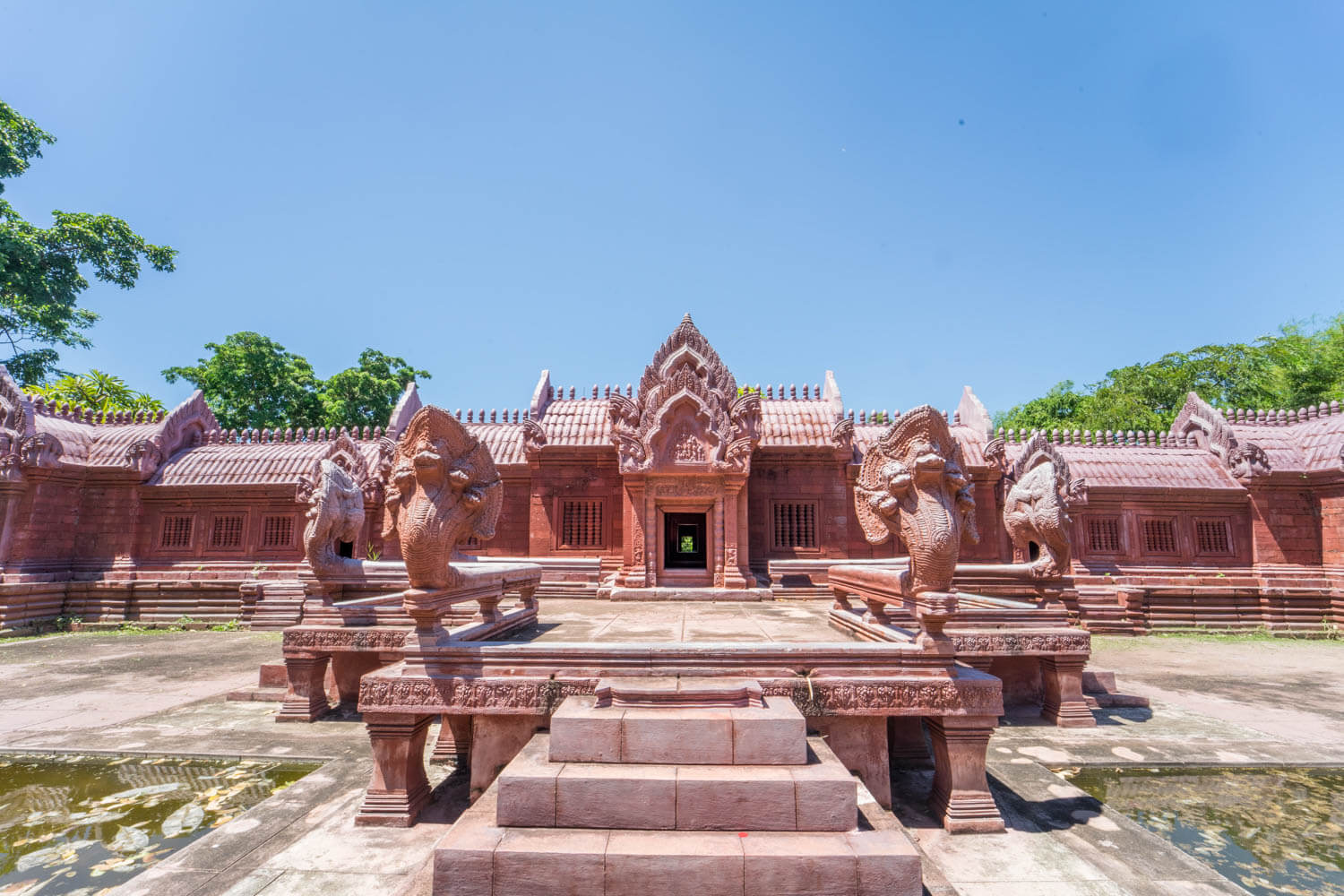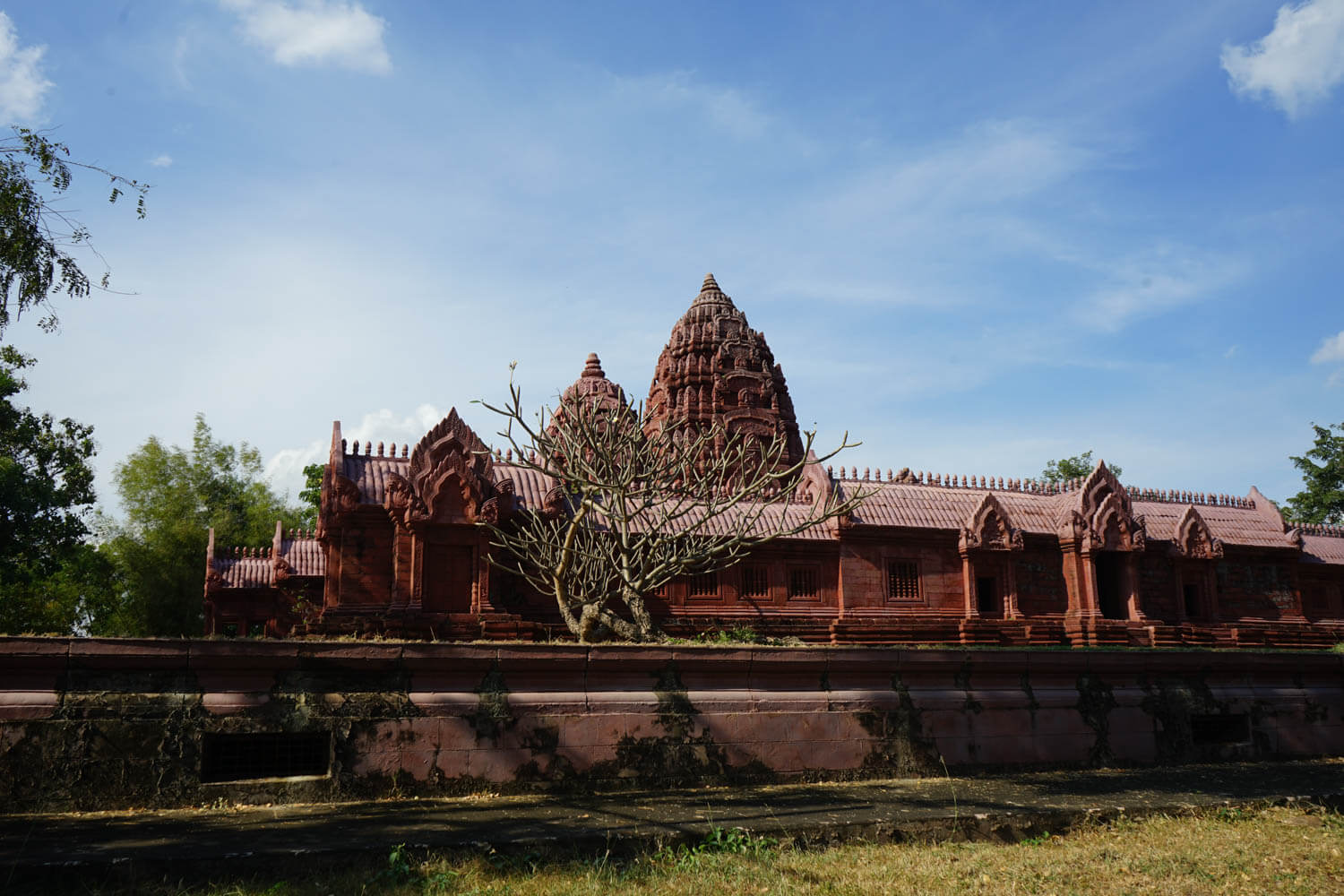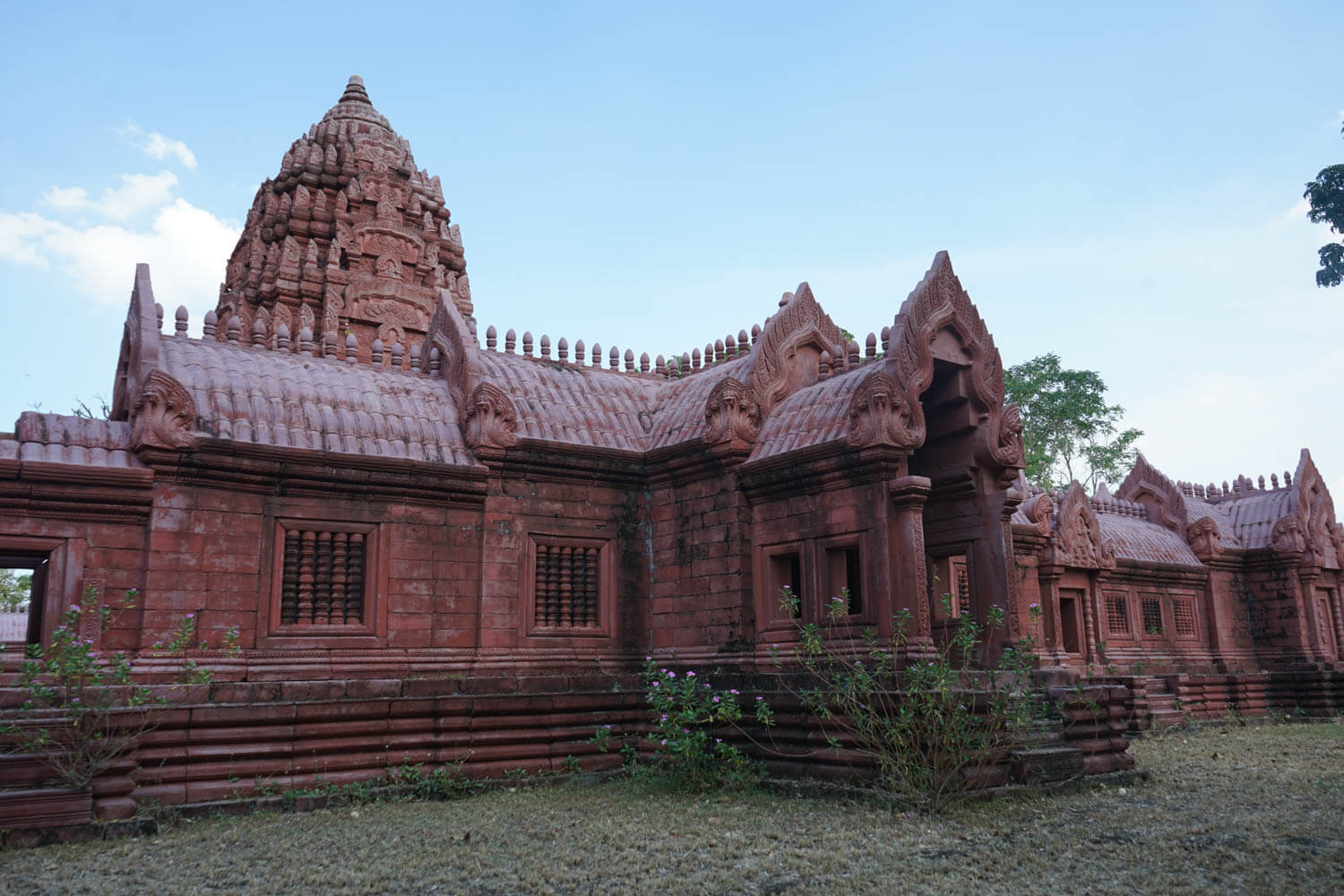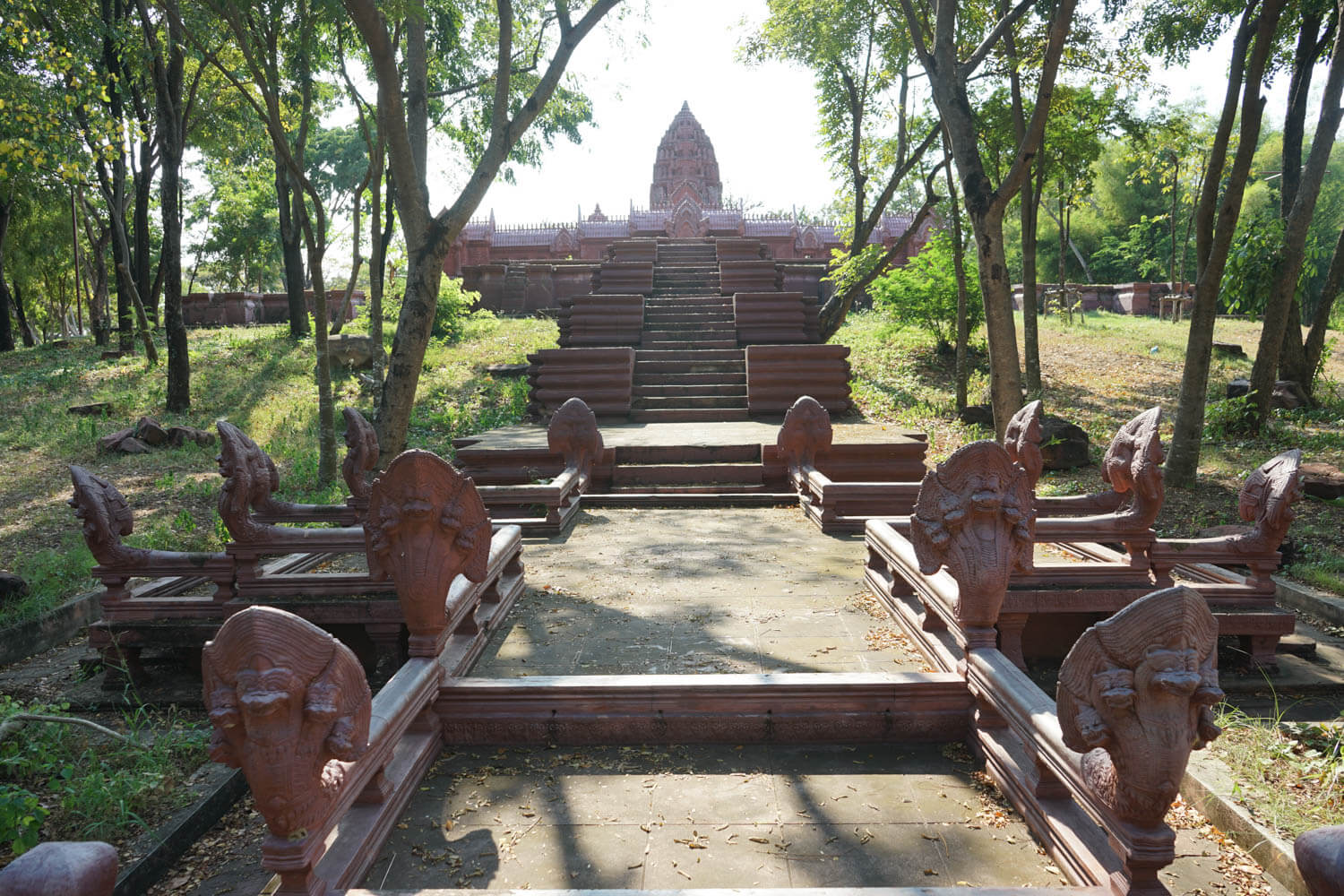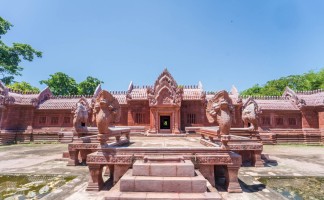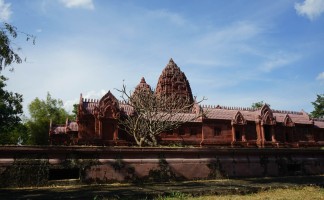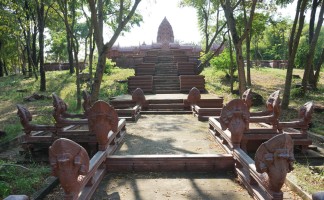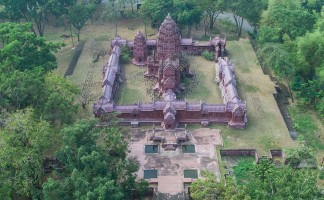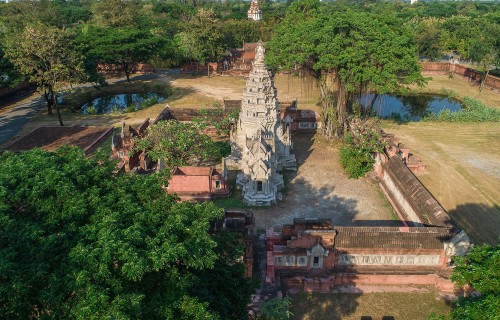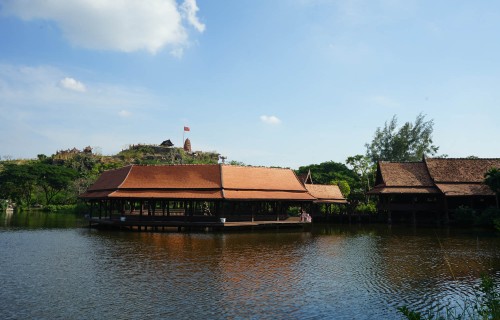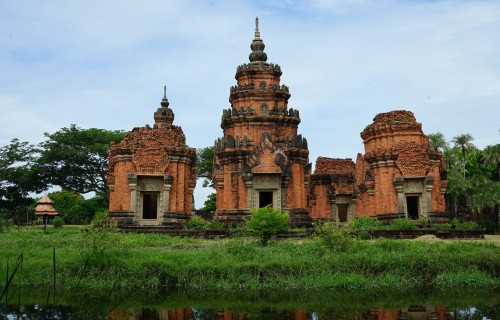The Phanom Rung Sanctuary (87)
Buri Ram
- Information
The Phanom Rung Stone Sanctuary is located in Buri Ram Province, on an extinct volcano. Built in accordance with Hinduism beliefs of the Shiva sect, the sanctuary had been constructed and used as a religious center for years. The construction presumably began around the 10th century A.D. and finished within the 13th century A.D. When King Jayavarman VII adopted Mahayana Buddhism, the function of the Hindu sanctuary had been changed to serve as a Mahayana monastery.
The site is approached from the east along the first three-leveled platforms leading to the first passage. Then there is a causeway lined with blunted stone pillars in parallel rows. The path of stone uprights then leads to the Naga Bridge. Far on the northern side of the cross-shaped passage is a laterite pavilion or Phlabphla called the Elephant Shelter. At the end of the bridge is a terraced staircase with 5 landings leading up to the sanctuary. Beyond the bridge is a vast platform which has a passage that will lead to the Naga Bridge, right in front of the central gate of the gallery. The gate is the first entrance which will direct travellers to the inner courtyard of the prasat, by crossing another Naga Bridge that connects the gate with the main prang.
The most important part, the main prang, is situated right at the center of the inner courtyard of the sanctuary. The building has a rectangular shape with re-entrant angles at the corners. The square mondop was built adjacent to the main prang. The architectural designs that were carved on the prang such as the posts at the door frame, pillars on the walls, lintels, porticos and pediments, depict designs of flora, leaves, hermits, gods and goddesses and characters from religious myths: Vishnu (Narai) resting on Ananta, the Naga king and Shiva dancing, for example.
The decorations found on the lintels and frontal pediments of the main prang help indicate the age of the main building together with the staircase and the Naga Bridge; they are believed to have been constructed around the 12th century A.D.
On the grounds of the inner courtyard, southwest of the main prang is a small prang with no roof. From the evidence of the style of art found on the carvings, pediments and lintels, itis understood that the minor prang was built before the main prang, around the 11th century A.D.
There’re remains of the brick base of the prang were also discovered lying on the northeast of the main prang and dated back to the 10th century A.D. Another structuremade of laterite stands on the southeast of the main prang and dated to the 13th century A.D. The laterite structure is contemporary to the building which is known as Rong Chang Phueak (the Elephant Shelter).
The site is approached from the east along the first three-leveled platforms leading to the first passage. Then there is a causeway lined with blunted stone pillars in parallel rows. The path of stone uprights then leads to the Naga Bridge. Far on the northern side of the cross-shaped passage is a laterite pavilion or Phlabphla called the Elephant Shelter. At the end of the bridge is a terraced staircase with 5 landings leading up to the sanctuary. Beyond the bridge is a vast platform which has a passage that will lead to the Naga Bridge, right in front of the central gate of the gallery. The gate is the first entrance which will direct travellers to the inner courtyard of the prasat, by crossing another Naga Bridge that connects the gate with the main prang.
The most important part, the main prang, is situated right at the center of the inner courtyard of the sanctuary. The building has a rectangular shape with re-entrant angles at the corners. The square mondop was built adjacent to the main prang. The architectural designs that were carved on the prang such as the posts at the door frame, pillars on the walls, lintels, porticos and pediments, depict designs of flora, leaves, hermits, gods and goddesses and characters from religious myths: Vishnu (Narai) resting on Ananta, the Naga king and Shiva dancing, for example.
The decorations found on the lintels and frontal pediments of the main prang help indicate the age of the main building together with the staircase and the Naga Bridge; they are believed to have been constructed around the 12th century A.D.
On the grounds of the inner courtyard, southwest of the main prang is a small prang with no roof. From the evidence of the style of art found on the carvings, pediments and lintels, itis understood that the minor prang was built before the main prang, around the 11th century A.D.
There’re remains of the brick base of the prang were also discovered lying on the northeast of the main prang and dated back to the 10th century A.D. Another structuremade of laterite stands on the southeast of the main prang and dated to the 13th century A.D. The laterite structure is contemporary to the building which is known as Rong Chang Phueak (the Elephant Shelter).
